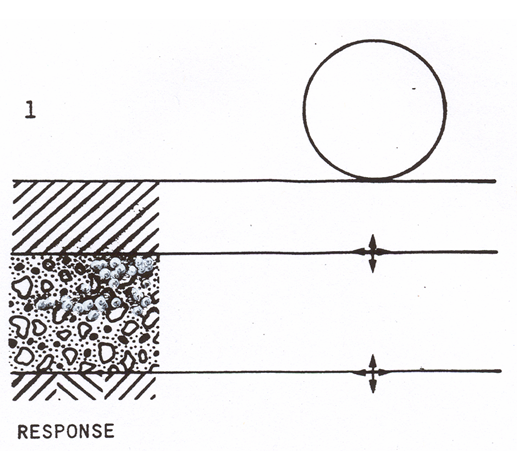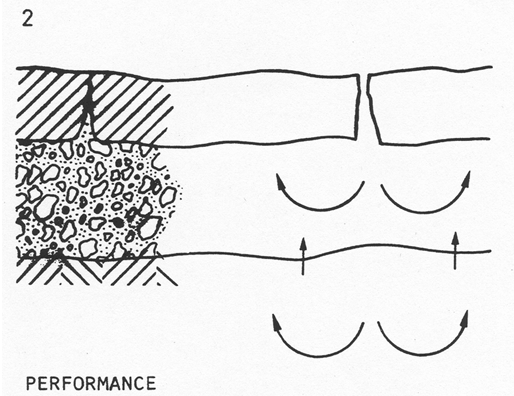
Mechanistic-Empirical approach
The Mechanistic-Empirical approach to pavement design makes use of fundamental physical properties and a theoretical model to predict the stresses, strains and deflections, i.e. the pavement response, caused by a load on the pavement, as illustrated below. If the basic assumptions with respect to materials and boundary conditions are correct, this method is valid anywhere and may be used to correctly predict the response for any combination of loads, climatic effects and materials.

In the second part of the approach the pavement response is used with empirical relationships to predict the pavement performance:

In the Classical Mechanistic-Empirical method the pavement response is only calculated for the initial pavement condition and the empirical relations predict the number of loads to failure, through cracking, rutting or roughness. In the incremental-recursive approach the response is calculated for each increment and each load and the change in pavement condition is predicted (in terms of damage to pavement layers and permanent deformation in the layers) using the time hardening procedure. For the next increment the new pavement condition is used with the mechanistic model to predict the response. This also allows aging and hardening of pavement materials to be included.